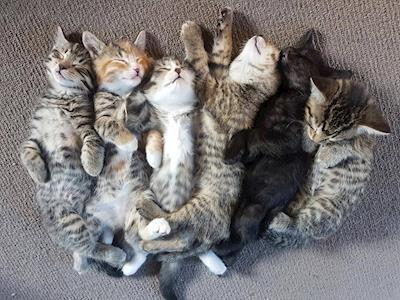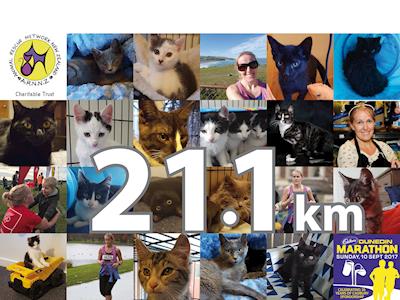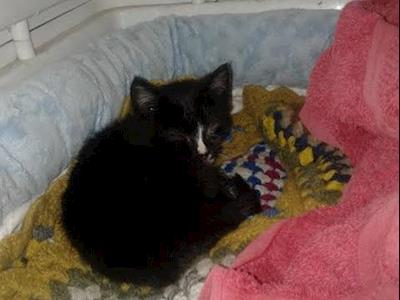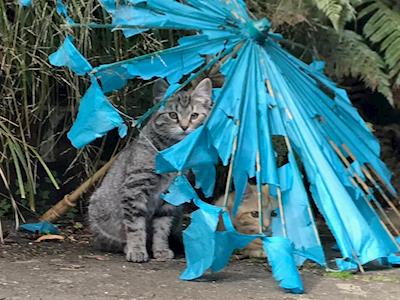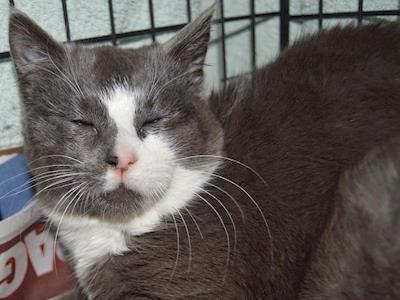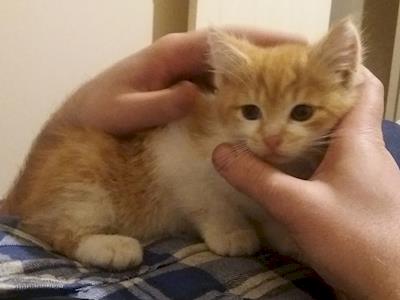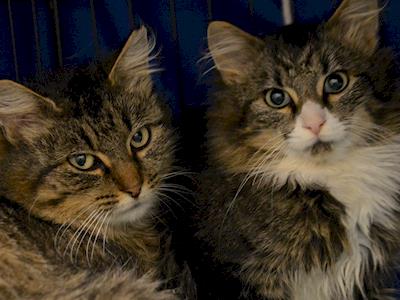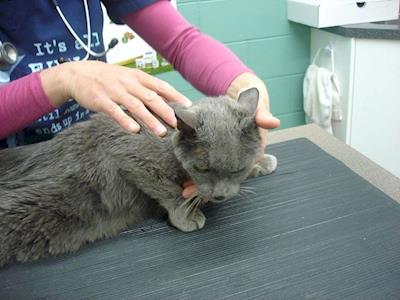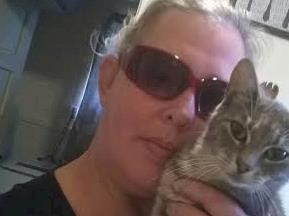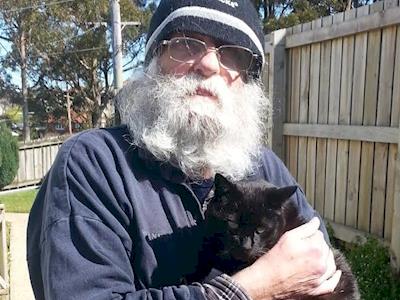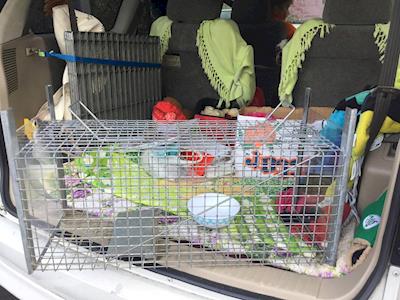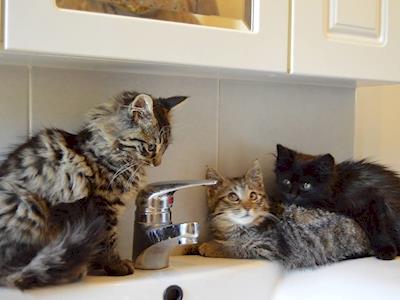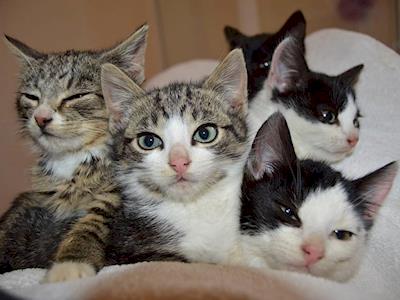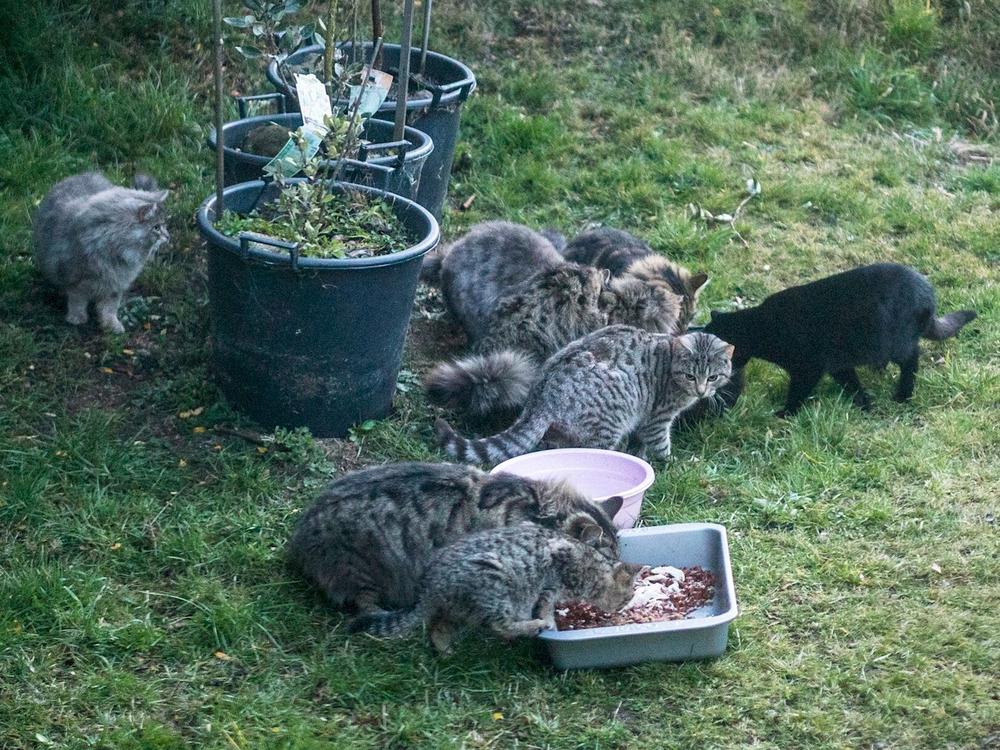
Please help Mary to spay/neuter Feraluna Cat Colony!
Kindhearted Mary is feeding and looking after 11 stray neighborhood cats and her own 4 boys. She needs help to desex them. Here is her story
Otago

Once upon a time, there were 11 free-range kitties who decided to stop and sit for a while under a hedge. Eventually, just as it was getting cold, the nice lady who lived in the house by the hedge (and who has more love for kitties than common sense) started to feed them, and provided cosy shelters (which the kitties promptly slept next to on the cold winter’s nights). And thus the Feraluna Cat Colony was created . . . .
Hi, I’m Mary, and as you can tell, I find myself honored by the presence of eleven (at last count) feral cats in my backyard – the first one started coming around a year and a half ago, and I was sure he had a home, but he’s now a permanent fixture . . . . over summer, two fluffy kittens showed up in my yard while I was gardening, happy, healthy and pouncing all over the place and while, at the time, they seemed to have a home, they too have become permanent fixtures. And it just grew from there – four brown fluffies, two silver short hairs, two kittens . . . and now there are eleven.
While I’m managing to feed them at the moment, and have put together some warm shelters for them (if they ever choose to use them), I’m keen to get them spayed and neutered before spring arrives and another kitten season is upon us – I would very much like it if they didn’t add to their numbers!
I have four boy cats of my own (well, inside cats as I call them now) and the funny thing is they are quite happy to have the Feraluna Colony in their yard – they sit with me while I feed the ferals, and wander amongst them without trying to eat the food – and even chase off other feline invaders on the Colony’s behalf!
Anyway, being a crazy cat lady, I have, of course named them all (with both long and short names as dignifies their status as cats) and have gotten to know a little about their personalities. (I’ve randomly assigned genders and it will be interesting to see how wrong I am!)
Toby (Feraluna Silver Tobermory) – Toby is an 8-12 week old short haired grey tabby kitten, and definitely the boldest of the bunch. He’s not shy about getting his share of the food (and he sits in the big food dish when it’s empty, waiting for more), and also comes up to my porch in the hopes I will be bringing more out soon. I have never seen such a tiny kitten stuff himself so much – he’s first into the food and the last to walk away, and will often continue chomping when the others have been scared away by something. If Moss is female, I suspect she may be his Mum.
Nibs (Feraluna Chocolate Nibs) – Nibs is around the same size as Toby, so again 8-12 weeks old, but I’m pretty sure she’s from a different litter. Mostly brown tabby fur, teeth and claws, and bad attitude. One of the most skittish, I’m lucky if she comes out while I’m around, but she’s right into the food dish when I go back inside.
Fizzgig (Feraluna Chocolate Fizzgig) – named after the pet creature, Fizzgig, in the movie “The Dark Crystal”, Fizzgig is a fluffy brown marble tabby with a thousand yard stare that dares me to ‘bring it’. I suspect he’s a tomcat, as I’ve seen him spraying the plant pots, and if he is I he may be Nibsy’s Dad, as they have the same facial expression, bright yellow eyes, and bad attitude. Fizzgig is a strange mix of boldness and gentleness – he stares me down, gets his fair share of the food, but also lets both kittens bat him away.
Coffee (Feraluna Chocolate Coffee) – biggest of the brown fluffy tabbies, I think Coffee is also a boy and possibly Toby’s Dad (as I’ve seen him snuggled between Toby and Moss, grooming Moss’ fur). Coffee is big and bold, meowing at me and coming right up onto my porch to see if food is on it’s way but, as befits a discerning feral, showing me his tail when I walk out the house. He’s fond of the dash and grab approach to eating – run in, grab a chunk, take it to a safe distance to eat before going back for more.
Cocoa and Latte (Feraluna Chocolate Cocoa and Feraluna Chocolate Latte) – these are the two smaller brown fluffy tabbies and as I don’t see them as much, and rarely together, I have trouble telling them apart. Cocoa is almost as bold in getting the food as Coffee and has the same snatch and run technique – she is (I think) there the most often. Latte is the smallest and quite shy – I often don’t see her until I’m inside again.
Moss (Feraluna Silver Moss) – Moss is a sleek silver tabby with mossy green eyes. She is quite bold, coming near the house with Coffee and Toby and meowing at me too. She’s also bold at the food dish, and prefers to eat from the smaller dish of kitten food I’ve been putting out (in the hopes Toby and Nibs will get some – nope, Moss eats it all) – no snatch and grab for her! I can get within a foot of her, but any movement of my hands and she’s off.
Cloud (Feraluna Silver Cloud) – a silver tabby with a huge, thick, billowy winter coat the colour of winter clouds. She’s one of the pair of kittens I first saw back in summer, and now seems to be a permanent fixture. She’s happy to come up to the food dish when I’m sitting near it, but isn’t as confident as some of the others.
Mist (Feraluna Silver Mist) – a silver tabby slightly darker than Cloud, but with the same thick soft coat. Mist is the other silver kitten I saw in summer, so is likely Cloud’s litter mate. Because he’s a bit bigger and more confident than Cloud, I’ve started calling him ‘he’.
Leopard (Feraluna Silver Leopard) – a gloriously patterned silver marble short haired tabby, I named Leopard after the snow leopards with similar fur patterns. Leopard is definitely the shyest of the Feralunas (even shyer than Nibs) and I rarely see him except through my kitchen window – I usually know if he’s around when I’m outside, catching fleeting glimpses through the hedge, but he doesn’t come to the food dish until I’m gone.
Ranel (sorry, he doesn’t get a fancy name) – Ranel is a sleek solid black who is older than the other cats, as I first saw him as a kitten a year and a half ago. My attempts to catch him then came to nothing (he would come in through my cat flap and I’d find him eating happily with my boys) and then he disappeared for quite a while, before showing up again with the group of ferals in my back yard. I’m not one hundred percent certain he’s stray (as he doesn’t startle as easily as the others and is more vocal), but he’s certainly hungry! He often vies with Moss for sole possession of the kitten food dish.
Cat Rescue Dunedin's involvement (page creator)
My name is Ana and I'm a founder of Animal Rescue Network New Zealand. Me and my friends saw a need to start animal rescue group in Dunedin and in January 2015 began trapping, neutering, and re-homing kittens and cats. We soon became aware of the scale of the stray cat problem in the city. ARNNZ became an incorporated charitable trust in June 2015. ARNNZ is committed to reducing the stray cat overpopulation using two approaches: 1. TNR (Trap, Neuter, Return), kittens under the age of 8 weeks can be socialized and re-homed. 2. Educating the community about the consequences of not de-sexing their pets. ARNNZ relies on donations to carry out this work and we do this without any premises. All of our rescues are fostered in private homes by volunteers.
About us
In January 2015 Cat Rescue Dunedin was formed by a small group of Dunedin residents who had seen the need for someone to begin helping the wild-born and abandoned cats and kittens living on the streets of Dunedin.
We became a charitable trust in June 2015, and since then we have desexed and rehomed hundreds of kittens which would otherwise have been left to breed uncontrollably. We were formerly known as the Animal Rescue Network NZ.
We are committed to reducing the wild-born and stray cat population through a combination of TNR and adoption.
Cats which are unable to be socialized to live with people can be humanely managed by a process known as trap, neuter, return (TNR). This means that the cats are desexed and returned to their environment where a caretaker feeds and monitors the cats to ensure their continued wellbeing. Desexing the cats ensures that their numbers don't increase, and over time the colony size reduces naturally.
Our long-term aim is to have our own shelter but until then all of our cats and kittens are fostered in private homes until they are ready for adoption.
Other page links
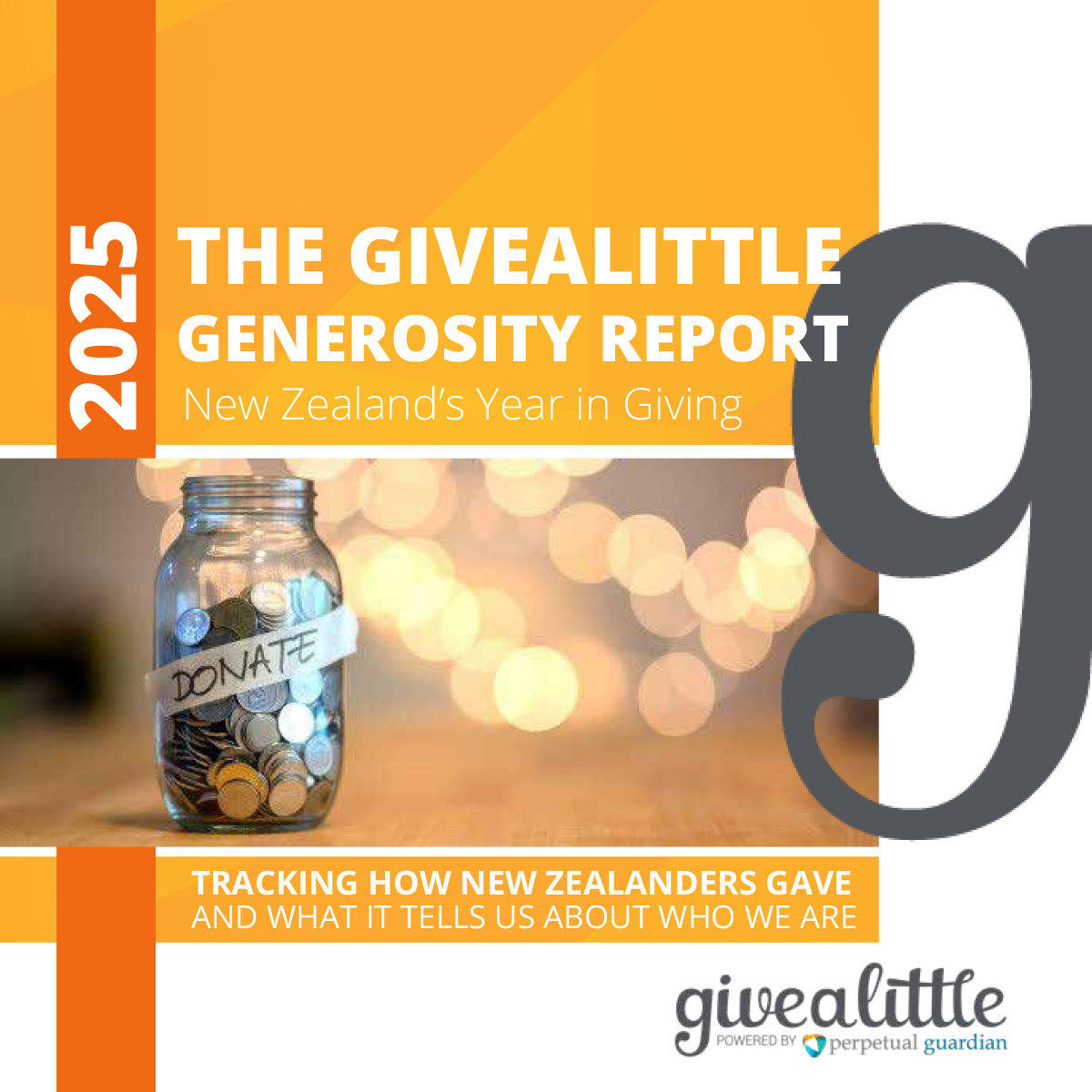
Latest donations
Who's involved?
Our other pages
Page Q&A
Ask a question hereAny concerns?
Report this pageThank the donor
Your message will be displayed on the page and emailed to the donor.
Your new message will also be emailed to the donor.
Saving a blank entry will delete the current comment.




